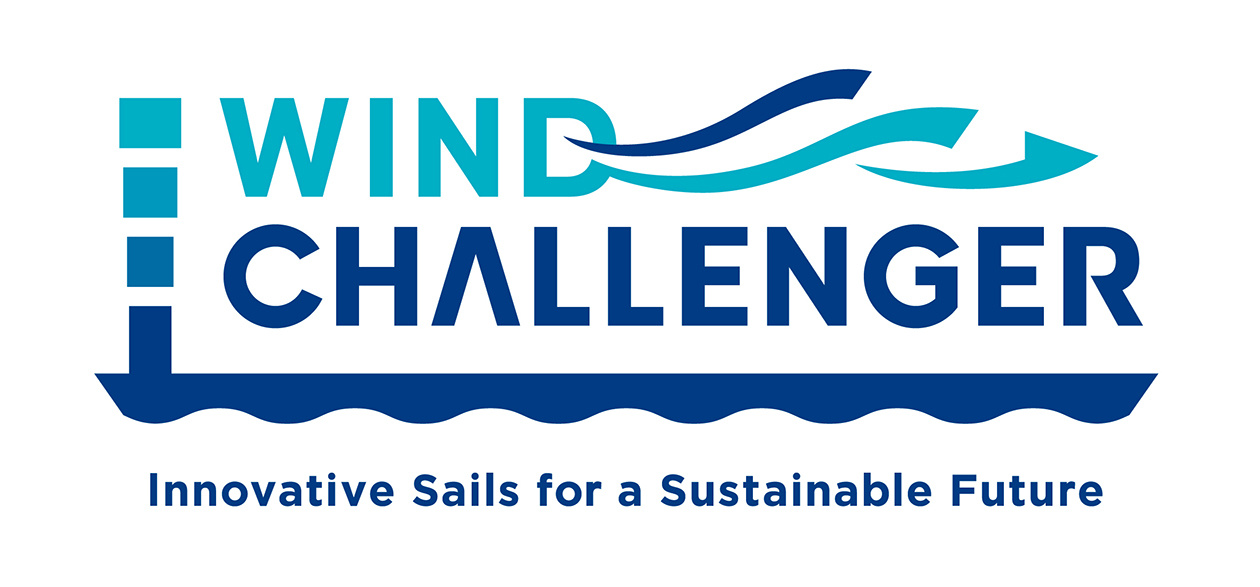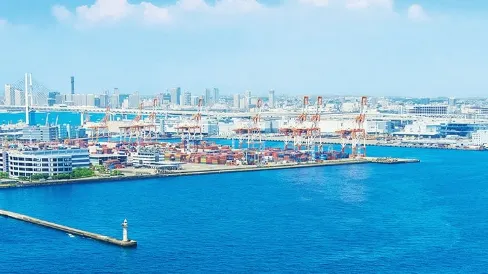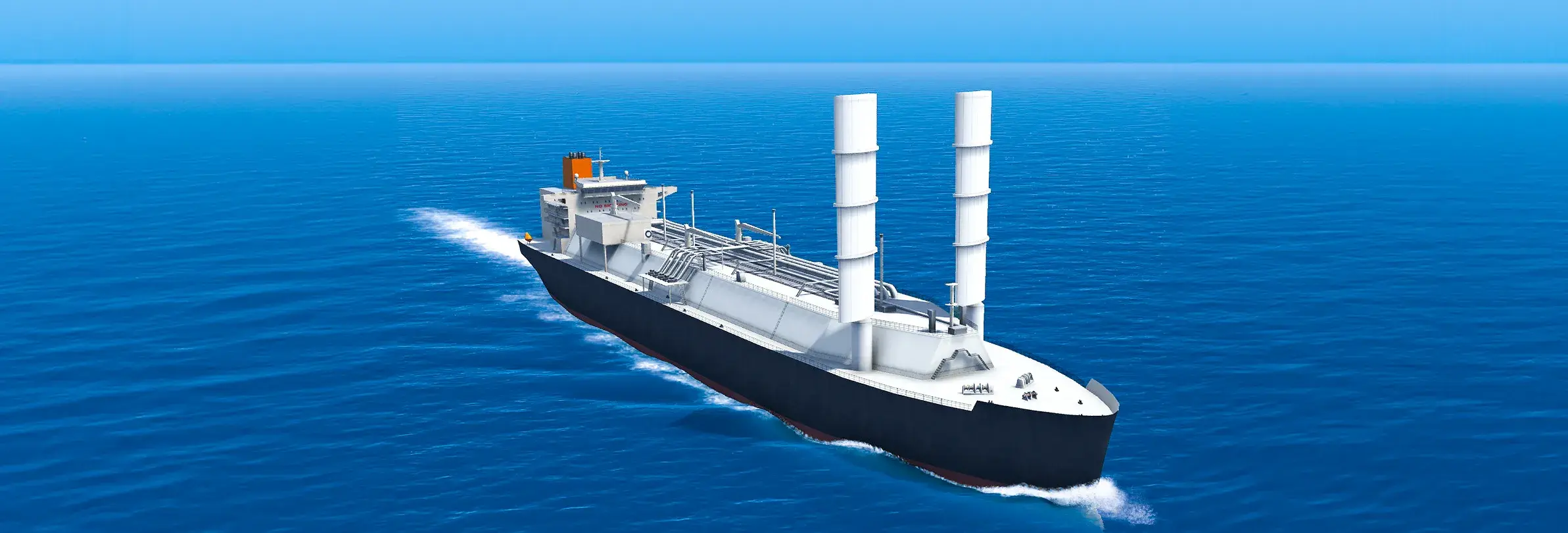
CASE STUDY
WIND CHALLENGER |
World's first installation of the two Wind Challenger sails for LNG carrier
Project Content
It was decided to install two Wind Challenger sails, a hard sail wind-assisted ship propulsion system developed by MOL and Oshima Shipbuilding together, to a new built LNG carrier. This vessel is scheduled for delivery in 2026 and will mark the world’s first LNG carrier equipped with Wind-Assisted Ship Propulsion Systems.
Key Points of this Project
- MOL Group will make a concerted effort to achieve net zero GHG emissions by 2050.
- MOL Group plans to launch 25 vessels equipped with the Wind Challenger by 2030 and 80 vessels by 2035.
- World's first installation of the two Wind Challenger sails for LNG carrier is scheduled for delivery in 2026.
Technologies and Services Utilized in this Case Study
Project Details
MOL has established the "MOL Group Environmental Vision 2.2" and has set the target of achieving net zero GHG emissions by 2050. "Further adoption of energy-saving technologies," is incorporated in the key strategies to achieve this target, and the group plans to launch 25 vessels equipped with the Wind Challenger by 2030 and 80 vessels by 2035.
In September 2024, it was decided to install two Wind Challenger sails, a hard sail wind-assisted ship propulsion system, to a new built membrane type LNG carrier. This vessel will mark the world's first LNG carrier equipped with Wind-Assisted Propulsion Systems. The design of this vessel is the most common one in the current LNG carrier market (cargo tank capacity: 174,000 cubic meters). Her sister vessels, without the Wind Challenger sail, have already called LNG terminals around the world. This vessel is under construction at the Geoje Shipyard of Hanwha Ocean Co., Ltd. and is scheduled for delivery in 2026.
In August 2024, MOL obtained an approval in principle (AiP) by Nippon Kaiji Kyokai (Class NK) - a first for an LNG carrier with Wind-Assisted Ship Propulsion Systems. This vessel will be the first case application to be built based on the design certified by that AiP.
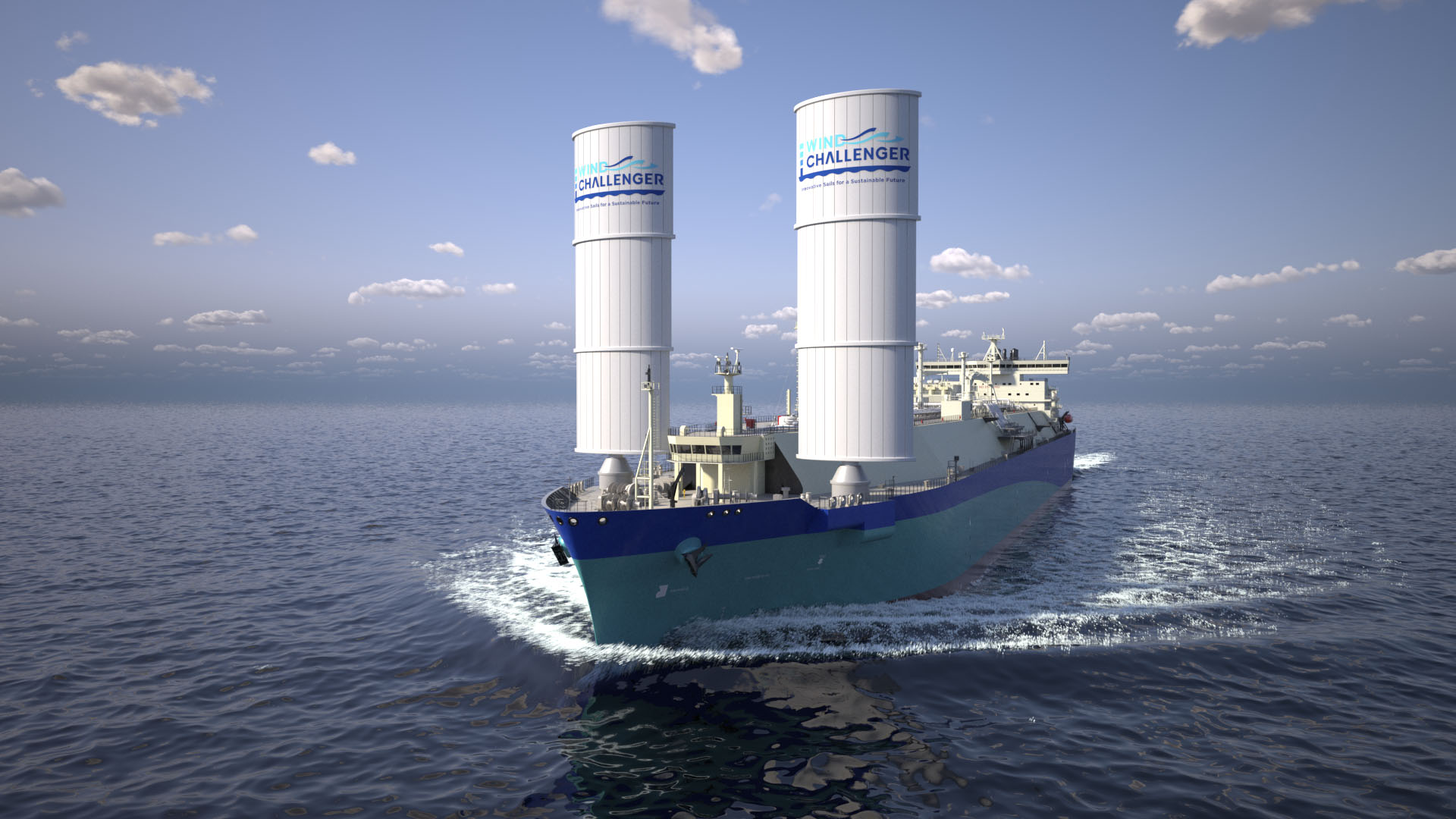
Challenges
During the evaluation process to obtain AiP, MOL, Hanwha Ocean, and ClassNK conducted a Risk assessment that comprehensively evaluated factors such as the placement of the sails, their impact on visibility, emergency operation procedures, and other safety measures. Additionally, the evaluation of the impact on the cargo tank due to the sail installation, conducted by Gaztransport et Technigaz SA (GTT) , the designer of the vessel's cargo tank, contributed to obtaining this AiP. GTT has confirmed that the structural safety of the tank is sufficiently ensured, even when considering the stresses imposed by sails.
In addition to the robust design of Wind Challenger itself, additional safety measures include a fully enclosed navigation bridge and a lookout station on the vessel's fore deck to further enhances visibility to install Wind Challenger sails to a LNG Carrier.
For tradability, the installation position of the Wind Challenger aims to minimize impact on the existing design of membrane type LNG Carriers. It will enable the retention of the existing mooring arrangement unchanged and thereby minimize impacts on ship shore compatibility, together with limited impact on the vessel's windage area.
Related Press Releases
- Sep 13, 2024
- Aug 2, 2024
- Jul 10, 2024
Related Solutions and Services
WIND CHALLENGER
Mitsui O.S.K. Lines (MOL) has developed the Wind Challenger, which converts wind energy directly to a vessel propulsion force through an extensive use of the latest technologies. Wind energy is clean and unlimited. We aim to drastically reduce greenhouse gas emissions by converting wind energy to propulsion force for ships. In October 2022, the 1st vessel, “SHOFU MARU” was delivered and started operation.

WIND HUNTER
This is an ultimate zero emission project under the Wind Challenger Project, currently in progress with MOL.
Offshore wind energy from sails is used not only as a propulsive force for the vessels, but also for the generation of hydrogen. We are studying ways to supply hydrogen to users on shore by combining this system with fuel cell, etc.

Download & Consultation
Wind Challenger Service Overview
download materials about outlines the Wind Challenger, including its structure and how it is propelled by wind.
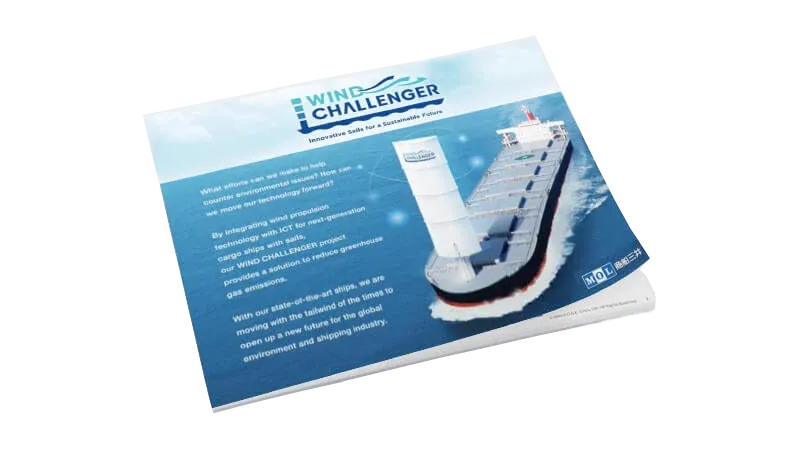
Inquiry(Wind Challenger)
Please feel free to contact us about our Wind Challenger and associated services.
-
About services
-
Customization
-
Schedule
-
Quote
-
Support
-
Other
Related Case Studies
-
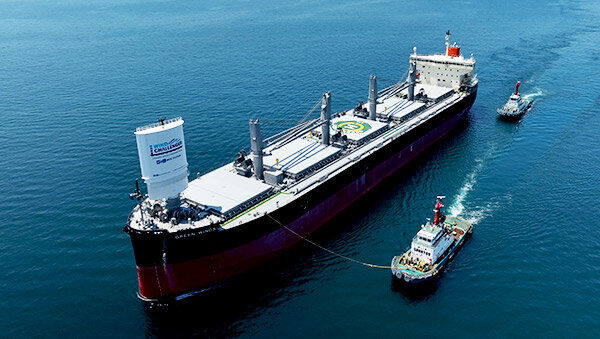
Delivery of the first crane vessel equipped with Wind Challenger
Wind ChallengerMitsui O.S.K. Lines (MOL)'s initiatives on the world's first crane vessel equipped with the Wind Challenger.
-
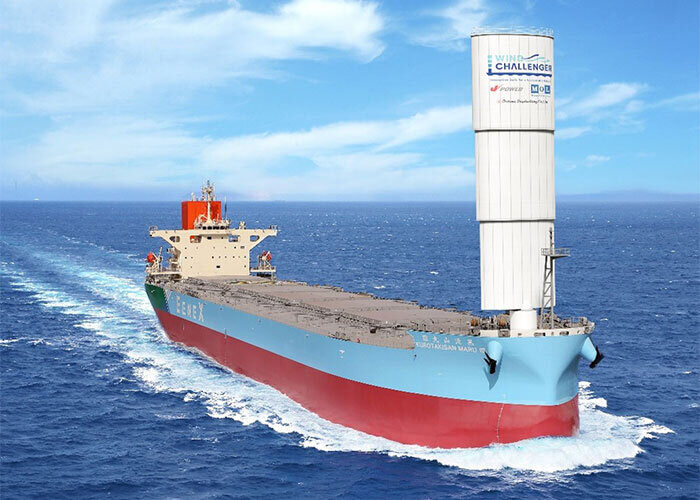
Installation of the Wind Challenger by Retrofitting on an In-service Vessel
Wind ChallengerMitsui O.S.K. Lines (MOL) was decided to install Wind Challenger sails by Retrofitting on an in-service vessel.
-
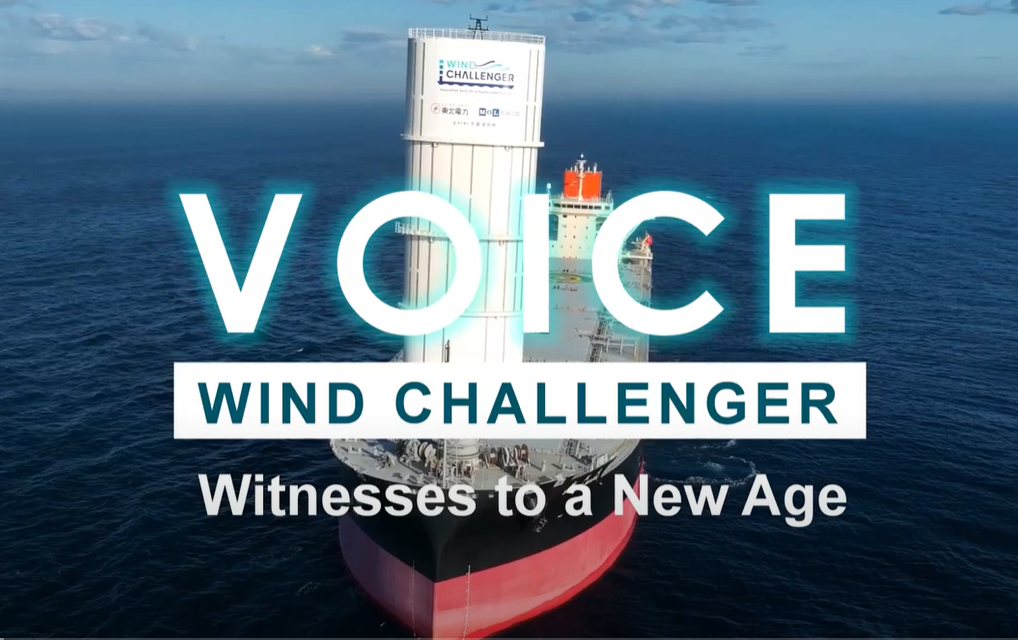
Voice of the crew and pilots of call who actually operated 1st Wind Challenger equipped vessel
Wind ChallengerInterviews with the inaugural crew members of SHOFU MARU (Captain and Chief Engineer) and pilots who actually operated the vessel.
-
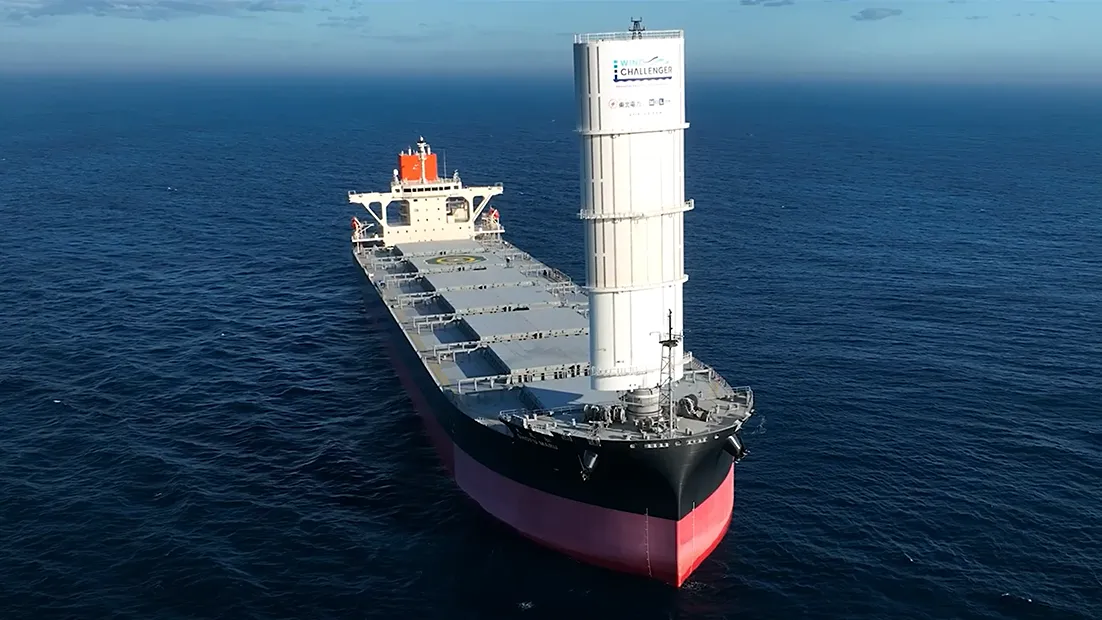
WIND CHALLENGER Delivered the First vessel
Wind ChallengerMitsui O.S.K. Lines, Ltd. (MOL) has developed the Wind Challenger, which converts wind energy directly to a vessel propulsion force. As a part of this project, the hard sail system to be installed on the first Wind Challenger ship was finally completed in February 2022.
-
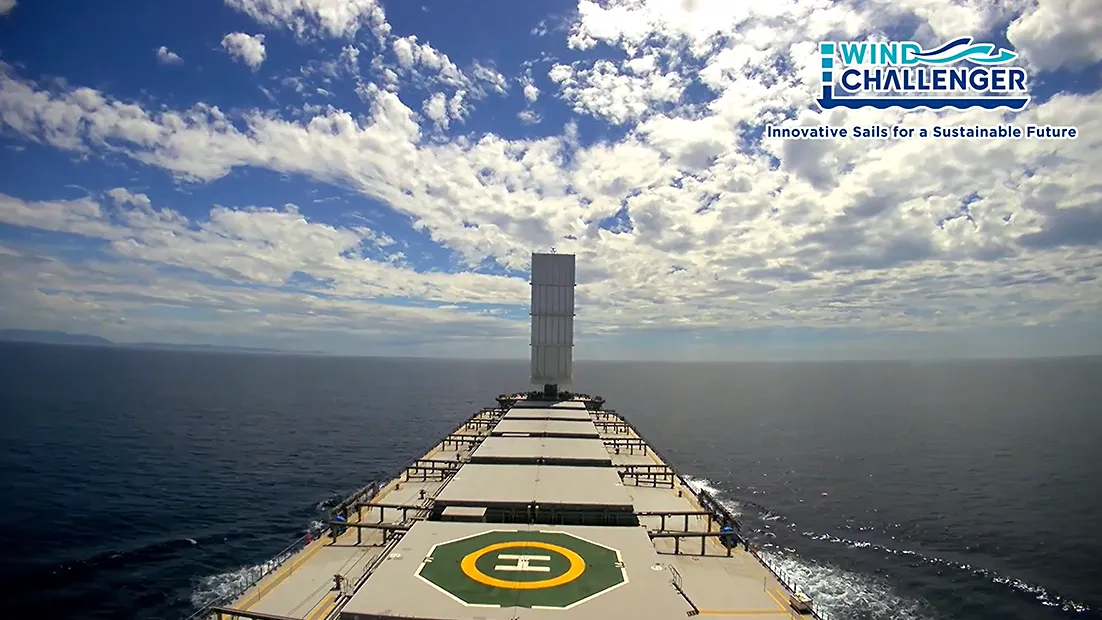
WIND CHALLENGER Sea Trial
Mitsui O.S.K. Lines, Ltd. (MOL) has developed the Wind Challenger, which converts wind energy directly to a vessel propulsion force. As a part of this project, the hard sail system to be installed on the first Wind Challenger ship was finally completed in February 2022.
-
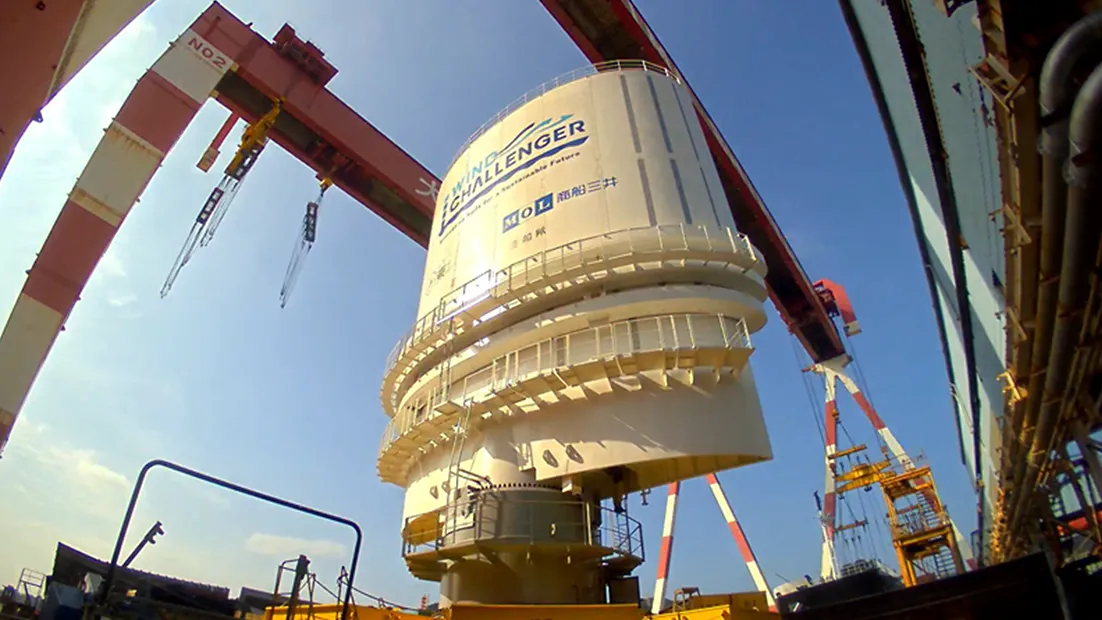
WIND CHALLENGER Hard Sail Completed
Wind ChallengerThe hard sail system to be installed on the first Wind Challenger ship was finally completed.
BLOG
-
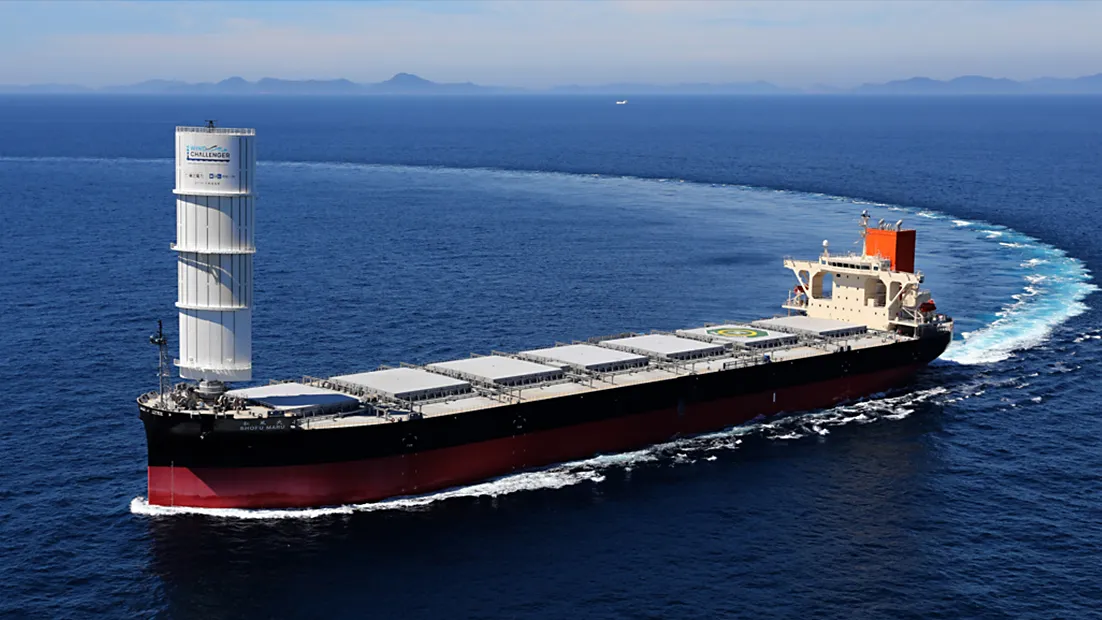
The Time Will Come When Even the Latest Built Vessels Will Have Sails: Wind Challenger (Part 3)
EnergyGeneral Shipping -

The Time Will Come When Even the Latest Built Vessels Will Have Sails: Wind Challenger (Part 2)
EnergyGeneral Shipping -

The Time Will Come When Even the Latest Built Vessels Will Have Sails: Wind Challenger (Part 1)
EnergyGeneral Shipping
